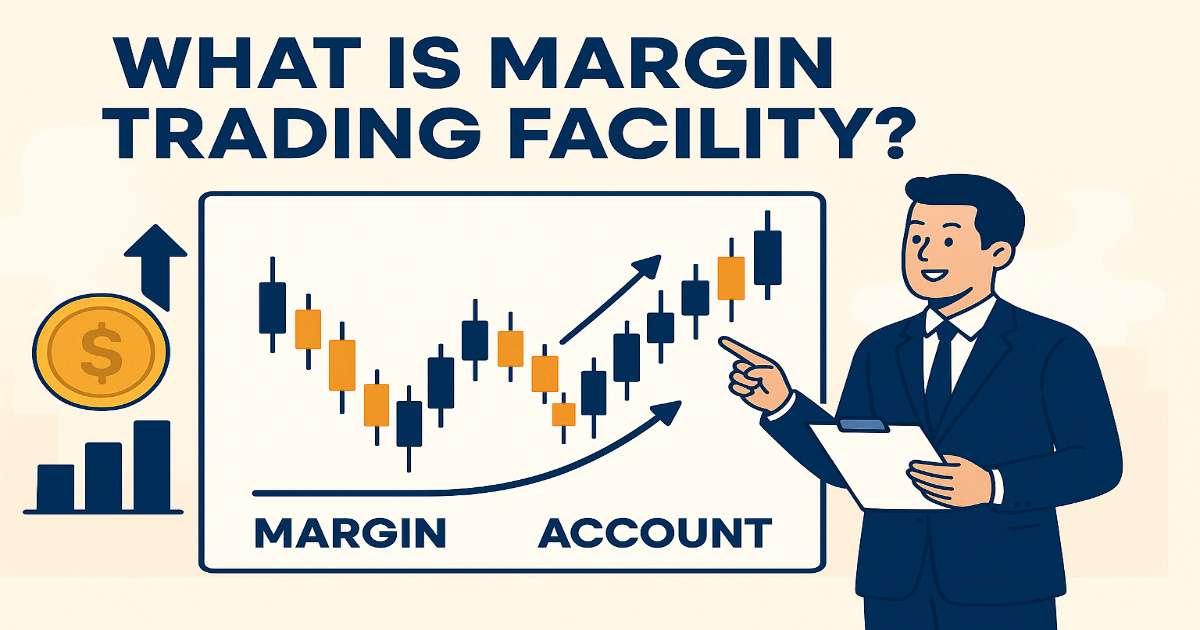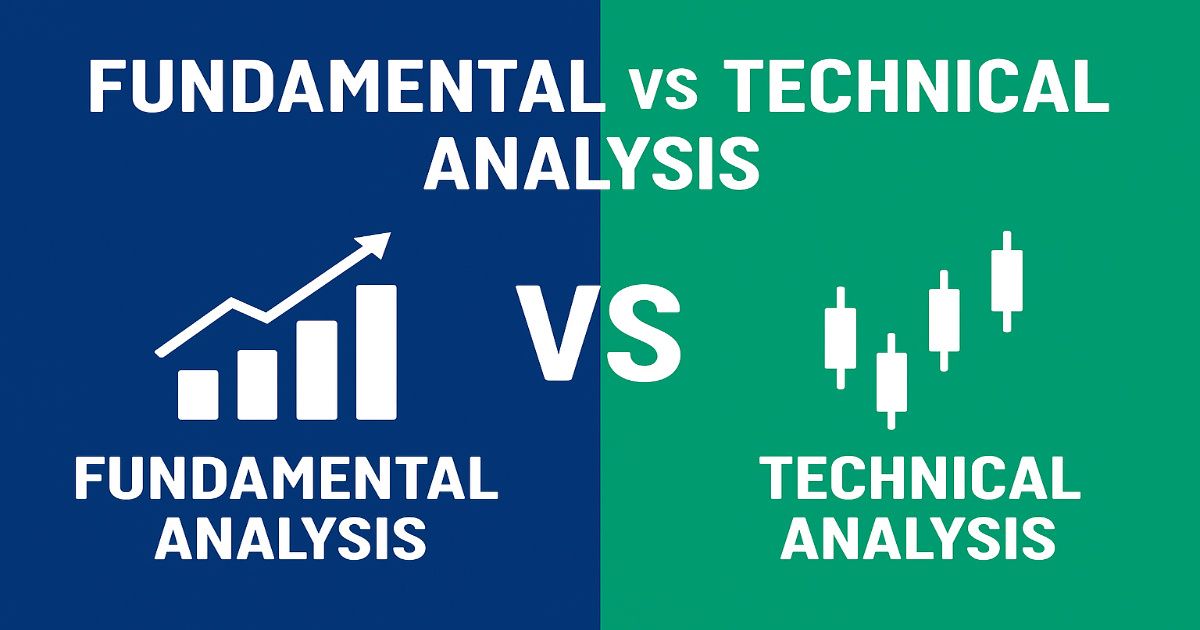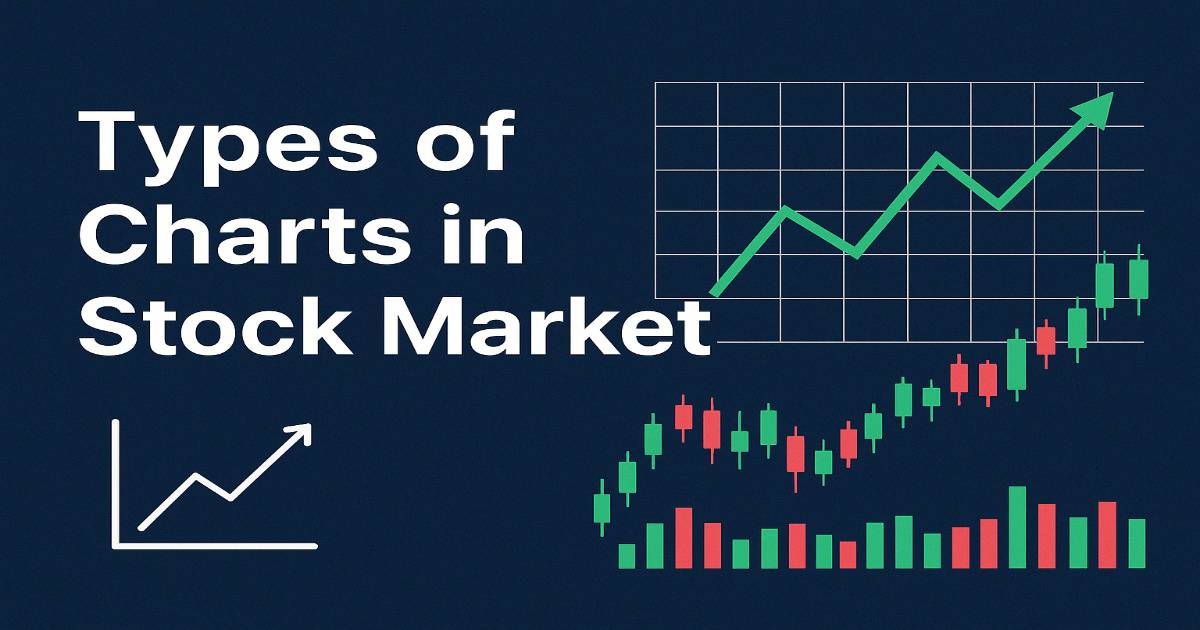Margin Trading Facility is a popular tool among stock market traders who wish to enhance their buying power using borrowed funds. By paying only a fraction of the total trade value, investors can use Margin Trading Facility to take larger positions in eligible stocks. This facility not only helps in optimizing capital usage but also opens the door to higher potential gains. However, before using Margin Trading Facility, it’s important to understand how it works, the costs involved, and the risks it carries — especially in volatile markets.
What is Margin Trading Facility
Margin Trading Facility is a service offered by stockbrokers where you pay a portion of the total trade value (called margin) and borrow the rest from the broker to buy stocks. It’s like taking a short-term loan to increase your purchasing power in the market.
This facility is regulated by SEBI and offered only by registered brokers. The idea is to enable retail traders to take larger positions and make the most of market opportunities — without needing to sell existing holdings or wait for more funds.
MTF Example:
- Suppose you want to buy ₹1,00,000 worth of Reliance Industries shares.
- You pay daily interest (typically 9–18% p.a.) on the borrowed ₹75,000
- You only have ₹25,000
- Broker offers 4x MTF leverage
- You contribute ₹25,000 (25%)
- Broker funds the rest ₹75,000
How Does Margin Trading Facility Work?
Here’s a step-by-step overview of how MTF works:
- You select a stock from the list of MTF-eligible stocks provided by your broker.
- You pay a margin, say 25% of the total trade value.
- Broker funds the balance amount (i.e., 75% in this case).
- You can hold the position for a longer duration (days to weeks) than intraday, but it depends on the broker’s policy.
- Interest is charged daily on the borrowed amount until you square off (sell) or add more margin.
Example of Margin Trading
Let’s say:
- You want to buy 100 shares of Infosys at ₹1,500 = ₹1,50,000
- Your broker offers MTF with 25% margin
- You pay ₹37,500, and the broker funds ₹1,12,500
- Suppose the stock price goes up to ₹1,600
Now your investment is worth ₹1,60,000
Profit = ₹10,000 – (Interest + Other charges)
If stock price falls, your losses can also be magnified, and you might get a margin call (more on this later).
Example Scenario of MTF
Bullish Scenario (Profit):
- You buy ₹2,00,000 worth of Infosys shares
- You use ₹50,000 of your funds, broker gives ₹1,50,000
- After 15 days, Infosys price increases 10%
- Your position is now worth ₹2,20,000
- Profit = ₹20,000 – Interest (~₹750) = ₹19,250
- Your Return on Investment (ROI) = 38.5% in 15 days!
Bearish Scenario (Loss):
- Same ₹2,00,000 trade
- Price drops 10% in 10 days
- Position value = ₹1,80,000
- Loss = ₹20,000 + Interest (~₹500) = ₹20,500
- You only had ₹50,000 margin
- Your entire margin can be wiped out
- You may even get a margin call
Features of Margin Trading Facility
| Feature | Description |
|---|---|
| Leverage | Up to 4x (you pay 25%, broker funds 75%) |
| Holding Period | Upto 365 days (varies by broker) |
| Interest Charges | 9% to 18% annually (charged daily) |
| Eligible Stocks | SEBI-approved, large/mid-cap, liquid stocks |
| MTM Settlement | Daily mark-to-market adjustment of gains/losses |
| Risk Level | High (as losses can exceed margin) |
Benefits of Margin Trading Facility
1. Higher Buying Power
You can invest in larger quantities of stock with limited capital.
2. Longer Holding Than Intraday
Unlike intraday trading (which requires square-off on the same day), MTF allows multi-day holding.
3. Leverage on Blue-Chip Stocks
MTF is mostly offered on high-quality stocks, making it safer than leveraging small-cap or penny stocks.
4. Flexibility
You can square off or add more margin anytime, depending on market movement.
Risks of Margin Trading
While MTF looks attractive, it is important to understand the risks:
1. Amplified Losses
Losses are magnified due to leverage. A small fall in stock price can wipe out your capital.
2. Margin Call Risk
If the stock price falls and your margin drops below the maintenance level, the broker may issue a margin call. You need to add funds or your position will be forcibly sold.
3. Interest Charges
You pay daily interest on the borrowed amount. If the trade doesn’t perform well, your gains can be eaten up by interest.
4. Limited Stock Universe
You can only buy from SEBI-approved MTF stocks (mostly liquid large-cap or mid-cap stocks).
SEBI Guidelines on Margin Trading
To ensure retail investor protection, SEBI has framed several rules for brokers and investors:
SEBI Guidelines:
- Only SEBI-registered brokers can offer MTF
- Initial Margin: Minimum 20–25% required from investor
- Client Consent: Written or digital agreement mandatory
- MTM Loss Coverage: Clients must pay MTM losses daily
- Segregation of Securities: Shares bought through MTF must be kept in a separate demat account tagged as “MTF”
- Broker Disclosure: Interest rate and margin rules must be clear and transparent
These rules protect investors from over-leveraging and ensure transparency.
MTF vs Intraday Trading vs Delivery
| Feature | MTF | Intraday Trading | Delivery Buying |
|---|---|---|---|
| Leverage | Yes (up to 4x) | Yes (5x–10x usually) | No leverage |
| Holding Period | Upto 365 days | Only for 1 trading session | Infinite |
| Interest Charged | Yes (on borrowed capital) | No | No |
| Margin Requirement | 20–30% | 5–10% | 100% |
| Risk Level | Medium-High | Very High | Low-Moderate |
| Target Users | Swing/positional traders | Day traders | Long-term investors |
Real-World Use Cases of MTF
Case 1: Swing Trading with MTF
An investor is bullish on Tata Motors for the next 2 weeks. Instead of investing ₹1 lakh, they use MTF and invest ₹25,000 to control ₹1 lakh worth of shares — increasing potential gains while using limited capital.
Case 2: Earnings Season Opportunities
During earnings results, traders expect strong moves in certain blue-chip stocks. MTF allows them to capitalize on the momentum with higher positions.
Case 3: Short-Term Technical Breakouts
Traders who spot breakout charts may use MTF to take quick advantage and exit within 3–7 days.
Tips for Using Margin Trading Facility Wisely
- Always Set Stop-Loss Orders
To control downside risk, never trade without a stop-loss. - Track Daily MTM Changes
Be aware of how your trade is performing. Check broker alerts and dashboards. - Avoid MTF in Volatile or Penny Stocks
Stick to large-cap, less volatile stocks with stable fundamentals. - Don’t Use Full Leverage
Just because you’re offered 4x margin doesn’t mean you should always use it. - Exit Trades Early if the Trend Breaks
Don’t wait for losses to mount — act quickly if your view changes.
MTF charges Calculator
Angel one MTF Charges Calculator
MTF Full Form
Margin Trading Facility
Brokers Offering MTF in India
| Broker Name | MTF Margin Offered | Interest Rate | Max Holding |
|---|---|---|---|
| Zerodha | Up to 4x | ~10–12% p.a. | 365 days |
| Angel One | Up to 3.5x | ~12–14% p.a. | 365 days |
| Upstox | Up to 4x | ~13% p.a. | 365 days |
| ICICI Direct | Up to 4x | ~9–12% p.a. | 365 days |
| HDFC Securities | Up to 3.5x | ~12–15% p.a. | 365 days |
Final Thoughts:
Margin Trading Facility (MTF) is a double-edged sword. It can amplify profits if your trade goes right, but also magnify losses if things go wrong. It requires discipline, real-time tracking, and strict risk management.
Use MTF only if you understand the risks, have experience trading, and can manage losses without panic.
As the famous trader Paul Tudor Jones once said:
“Don’t focus on making money. Focus on protecting what you have.”
Conclusion
Margin Trading Facility (MTF) is a powerful tool that can boost your trading capacity by offering leverage on stock purchases. It allows you to take larger positions with limited capital, helping you capitalize on short-term market movements. However, with higher rewards come higher risks — and MTF is no exception.
Traders using MTF must be disciplined, well-informed, and ready to manage risk effectively. If used smartly, it can become an excellent ally in your trading strategy. But misuse or neglect of margin calls can lead to significant losses, even eroding your entire capital.
So before diving into MTF:
✔️ Understand how it works
✔️ Check interest rates and eligible stocks
✔️ Use stop-losses
✔️ Never over-leverage
FAQs
What is an MTF margin shortfall?
A shortfall happens when the post-haircut value is less than or equal to the loan amount. The post-haircut value (PHV) is calculated as PHV = ∑Previous Close * Quantity * (1 – Haircut Percentage)
What are the interest charges for MTF?
interest rates vary by broker, generally ranging between 9% to 18% per annum, calculated on a daily basis on the borrowed amount.
How long can I hold the positions purchased using MTF?
You can hold your MTF positions as long as you want, unless Groww squares it off due to a shortfall in margin.
Can I hold MTF shares for the long term?
No. MTF is meant for short-to-medium-term trading. Most brokers allow you to hold MTF positions for up to 365 days. After that, you must either repay the borrowed amount or square off the position.
How can I activate MTF with my broker?
You need to submit a digital or physical MTF consent form and complete the KYC requirements. Once approved, the broker will activate MTF on your trading account.
Can I convert MTF trades to delivery?
Yes. You can convert an MTF position into a delivery trade by paying the full purchase amount and clearing any outstanding dues, including interest.
Where can I see my MTF positions and margin requirements?
Most brokers provide a separate MTF dashboard in their trading platforms where you can monitor open positions, available margin, interest charges, and MTM (Mark-to-Market) losses or gains.







